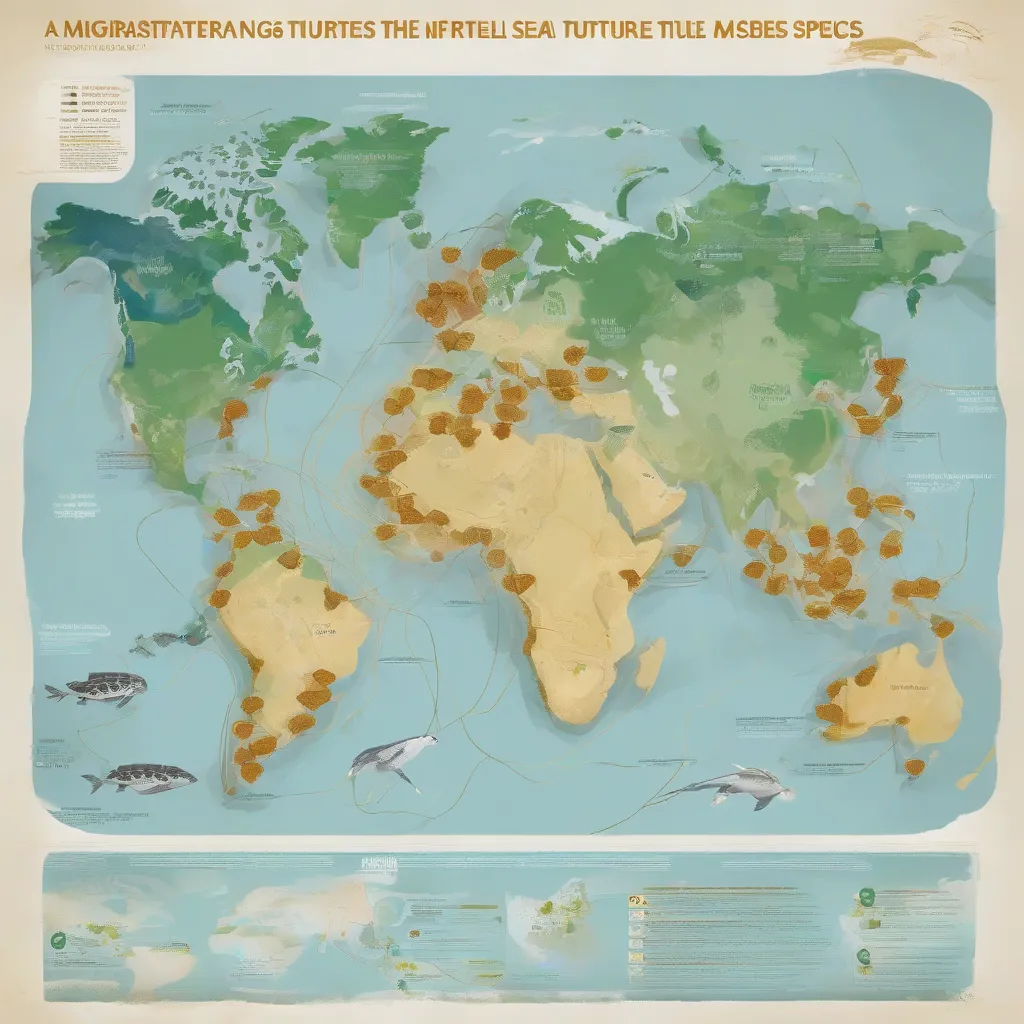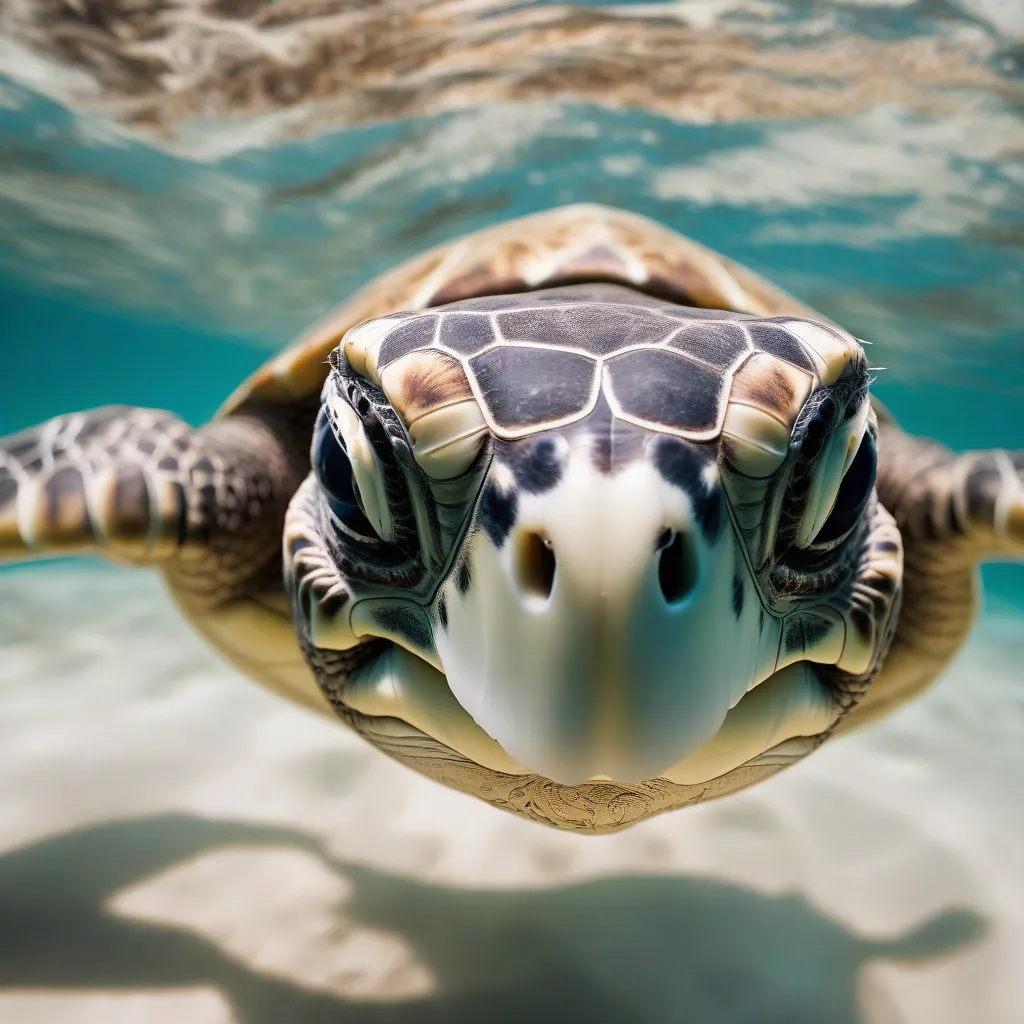Have you ever wondered about the incredible journeys sea turtles undertake? These ancient mariners navigate vast oceans, guided by instinct and the earth’s magnetic field. Their migrations are nothing short of epic, covering thousands of miles across the globe. But just How Far Do Sea Turtles Travel?
Unveiling the Marathon Migrations of Sea Turtles
The distance a sea turtle travels depends largely on its species and the purpose of its journey. Some, like the Kemp’s ridley sea turtle, primarily stick to coastal waters, venturing only a few hundred miles. However, others, like the leatherback sea turtle, are known for their transoceanic voyages, traversing thousands of miles between feeding and nesting grounds.
Here’s a glimpse into the awe-inspiring distances covered by different sea turtle species:
- Leatherback Sea Turtles: These giants hold the record for the longest recorded migration among sea turtles. One leatherback tracked from Indonesia to Oregon traveled a staggering 12,774 miles!
- Loggerhead Sea Turtles: Loggerheads nesting in Japan have been known to cross the entire Pacific Ocean to feed off the coast of California, a journey of over 6,000 miles.
- Green Sea Turtles: These turtles often migrate between feeding grounds in Brazil and nesting beaches on Ascension Island, covering around 1,400 miles each way.
The Why Behind the Journey: Reasons for Sea Turtle Migration
Why do these creatures embark on such arduous journeys? The answer lies in their need to find the best resources for survival and reproduction.
- Food, Glorious Food: Sea turtles often migrate between feeding grounds with abundant prey and breeding areas where food might be scarcer.
- Nesting Instincts: Perhaps the most remarkable reason for their migrations is reproduction. Female sea turtles return to the same beaches where they were born to lay their eggs, often traveling thousands of miles to reach these nesting sites.
Navigating the Deep Blue: How Do Sea Turtles Find Their Way?
The navigational prowess of sea turtles continues to fascinate scientists. These ancient reptiles utilize a combination of remarkable techniques:
- Earth’s Magnetic Field: Sea turtles possess an internal “compass” that allows them to sense the earth’s magnetic field, helping them maintain their course across vast oceans.
- Ocean Currents: These savvy navigators also ride ocean currents, utilizing these natural highways to aid their long-distance travels.
- Celestial Cues: While not fully understood, there’s evidence suggesting sea turtles might use the stars and the moon for orientation, much like ancient sailors.
Threats to Sea Turtles on the Move
Sadly, these incredible journeys are fraught with danger. Human activities pose significant threats to sea turtle populations worldwide.
- Fishing Gear Entanglement: Sea turtles often become entangled in fishing nets and lines, leading to injury or drowning.
- Plastic Pollution: Mistaking plastic debris for food can be fatal, blocking their digestive systems.
- Coastal Development: Destruction of nesting beaches due to coastal development reduces their breeding grounds.
What Can We Do to Help?
We can all play a part in protecting these magnificent creatures:
- Support Sustainable Seafood: Choose sustainably sourced seafood to reduce the impact of fishing on sea turtle populations.
- Reduce Plastic Use: Minimizing our reliance on single-use plastics helps keep our oceans cleaner and safer for marine life.
- Support Sea Turtle Conservation: Consider donating to or volunteering with organizations dedicated to sea turtle research and conservation.
FAQs: Your Burning Sea Turtle Travel Questions Answered!
Q: Do all sea turtle species migrate long distances?
A: No, not all species are long-distance travelers. Some, like the Kemp’s ridley, primarily inhabit coastal waters.
Q: How long does it take a sea turtle to complete a migration?
A: Migration duration varies greatly depending on the distance and the species. Some journeys can take several months to complete.
Q: Are sea turtles endangered?
A: Sadly, most sea turtle species are classified as endangered or vulnerable due to threats like habitat loss and fishing interactions.
 Sea Turtle Migration
Sea Turtle Migration
Exploring the Wonders of the Natural World with Travelcar.edu.vn
Interested in learning more about the fascinating world of sea turtles and other incredible wildlife? Dive into a wealth of travel and nature articles on travelcar.edu.vn. Discover tips for planning your next adventure, from exploring the vibrant coral reefs of Australia’s Great Barrier Reef to witnessing the awe-inspiring migration of gray whales along the California coast.
 Endangered Sea Turtle
Endangered Sea Turtle
Let TRAVELCAR.edu.vn be your guide to exploring the wonders of the natural world while promoting responsible travel and conservation efforts.
Start your journey of discovery today!

